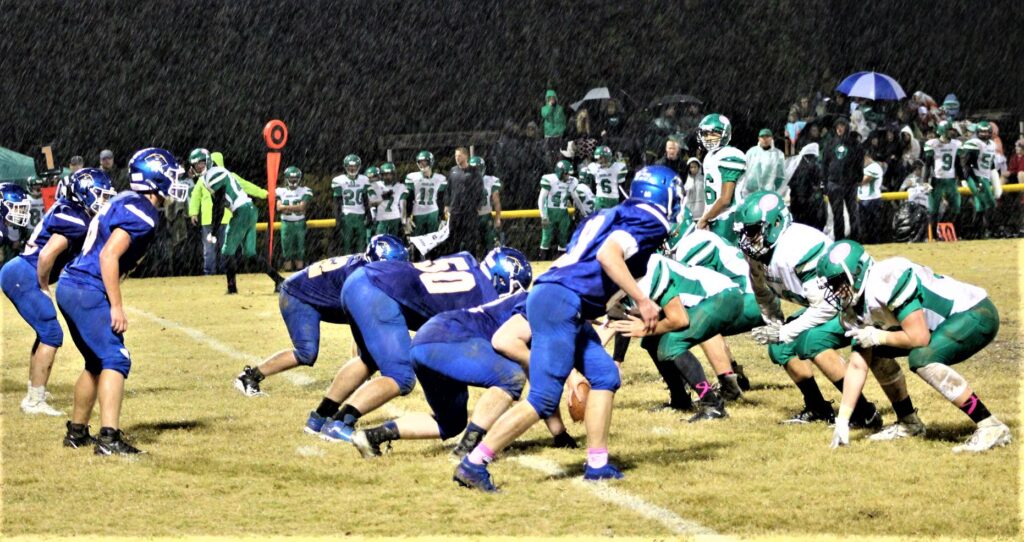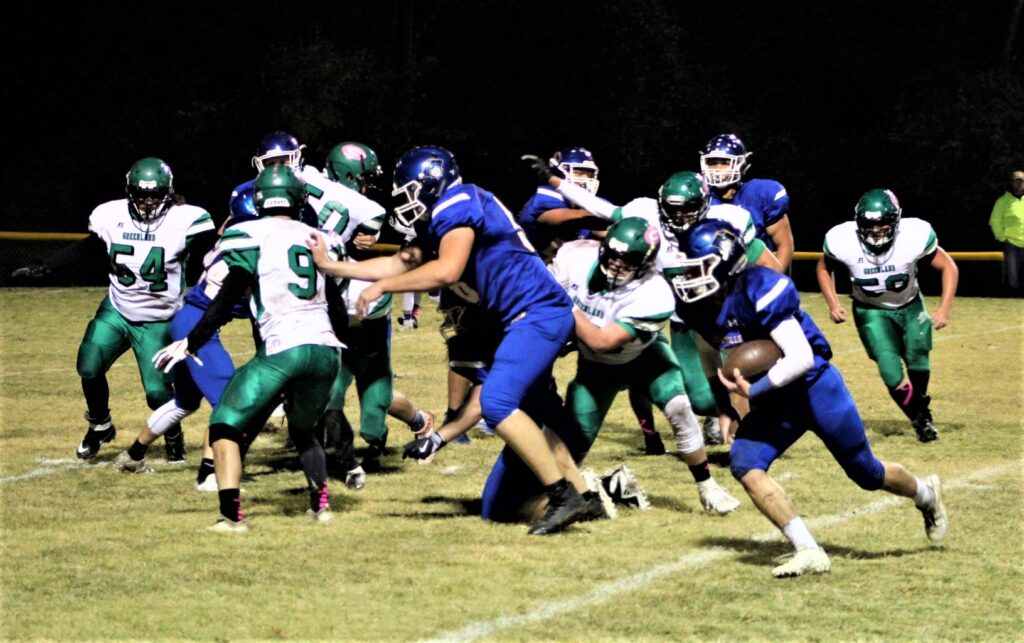“The Struggle Is Real”. That particular quote has made its way into many conversations and memes over the past few years. Although we may never know where it originated from, a good guess would be that it was said many times by quite a few small-town football coaches at the beginning of each season. The struggle these coaches face is the reoccurring and ever-present task of trying to fill their 7th-Grade, Jr High, and Sr High rosters with as many warm bodies as possible.

Most small-school football programs don’t have the luxury of having tons of athletes with the choice of handpicking their players. Coaches have to get out and recruit players. Never played? No problem. Two left feet? That’s great. It’s almost like small school coaching staff are having to turn into college recruiters. They talk to parents, ask the community to help spread the word, and with every player that signs up, the same question is usually being asked. “Do you have any friends who might be interested in playing?”

But a team with a small roster isn’t just because the town itself is small. There are multiple reasons behind having low numbers on a roster. One reason could be a lack of tradition. Magazine’s head coach, Ryan Chambers, explained this reason perfectly by saying “I believe the reason some schools lack numbers on rosters primarily deals directly with the lack of tradition. Like our community here at Magazine, we have only had one second-generation player ever in our history. Then you look at other schools in the River Valley like Charleston, Booneville, and Greenwood. They never have problems with numbers because of the rich tradition that is embedded in those towns. I know we can get to that point here, but it’s going to take a lot of hard work and continuous commitment every year from everyone involved with the program and in the community.”

Another reason for low numbers might be the time and commitment that it takes to play the sport of football. Coach Chambers continues by saying “We have workouts all summer and then for four months you are practicing or playing every day. In the day and age of video games, most kids just don’t want to put in the amount of time and effort that is needed into playing football.” Cedarville’s head football coach, Max Washausen agrees. “I’ve coached at the 2A, 3A, 4A, and 7A levels. Small school football is one of the toughest situations due to the fact that you need numbers. Football is a sport that requires a lot of time and commitment along with toughness and discipline. Unfortunately, not everyone is willing to put forth that type of effort. I believe that coaches, parents, and the community all working together to promote small-school football programs, will help immensely with the issue of low numbers.”

An unfortunate side effect of having low numbers on a team is the dissipation of the players’ confidence and enthusiasm. Head Tiger football coach for the Mansfield School District, Tim Cothran, gives his thoughts on this subject. “Low numbers, unfortunately, have a tendency to lower player morale from top to bottom. So we have to work hard as a coaching staff to not allow this to become a problem. It’s hard to get quality reps in during a game and it’s hard to give players the rest that is much needed. It just makes things a little harder in every area. But we just have to overcome this low numbers issue by hoping for the best each season. With it still being early, I’m optimistic that we can get more kids to sign up to play. We usually have a few more players join us as the summer goes on and when school starts. As for now, we will stay the course and hope for the best!”

Waldron’s head football coach, Doug Powell, has a mixed perspective when it comes to smaller rosters. Coming from 2A Magazine, Doug has adapted the pros of a small roster to his newly found Bulldog home. “A plus is that you as a coach can work more closely with your players. You get to know them as who they are as a player and a person. I can polish the slightest mistakes because there are fewer bodies to keep an eye on.” Although that’s a plus, Powell admits that low numbers can have a serious downside also. “You have players run out of gas a lot faster. They have to play intricate roles for every snap of the game without any breaks. That can cause mistakes to happen and bring you from a big victory to a close loss. That’s why we tell our players every practice to ask their fellow students if they want to suit up. We as coaches have some sway with students, but our players can run circles around us when it comes to convincing fellow students to join the team. That’s a good thing because we need to amplify our numbers as much as possible.”

When it comes to the low numbers situation, Hackett’s head football coach, Michael Meador, knows the harsh reality of a small roster. Hackett’s school system has grown in population over the past few years which moves the Hornets up from 2A to 3A football. With the school growing in size, Coach Meador knows he has room to grow his football program’s size too. Although they’ll be one of the smallest 3A programs, Coach Meador still has a positive outlook on it. “I really love coaching in a small town which in itself holds many benefits. Because the roster is on the less populated side, I get to be better and more creative as a coach. Sometimes you are just not able to go 11 vs 11 with the number of players that you have. With the many different technological advances, it has given kids more things to do other than sports. I believe to improve these numbers, we have to make sports, in general, so thrilling that it inspires students to want to be a part of it. That when they see their peers having so much fun playing sports, they will feel like they are missing out on something. In sports, it’s also very important to make it feel like a family atmosphere. I’m very lucky to be coaching at Hackett because not only do I feel like we have more fun than other teams, but we are starting to become a family on and off the field.”

Coaches have seen the pros and cons of low numbers in all aspects of their football programs. The one thing that sticks out to coaches, players, and fans though is the physical toll low numbers can take on a team. Players tend to have to play continuously through the game only having breaks at halftime and during timeouts. Most of the players have to play multiple positions on offense, defense, and special teams. This wears them down fast and often ends in athletes walking off the field feeling like they played an entire season in four quarters. When teams play opponents with more players on their roster, they have to suck it up and square off against fresh well-rested athletes. Players who are worn out also stand a higher chance of injury or quitting because they’re burnt out.

All of these coaches have found success with some of the smallest team rosters in their conferences. They’ve all seen their Davids dig deep and beat the Goliaths on the opposite sideline. But just think of what teams could do with a larger roster than they have now? By merely adding a hand full of players to their current roster, those close losses last season could be blowout wins this season. So what can you do to help build up the rosters of your school’s football program you ask? Easy! Spread the word. You can do this in person, on the phone, on social media, or even by putting up flyers. Reach out to family, friends, and other people in your community who you know have kids and remind them of upcoming sign-ups, practices, or simply ask if there is anyone needing a ride to one of these events. It’s time to build a football tradition where one may not have existed. Who knows? You just might be the very person who convinces the next All-State player to suit up!


Cedarville photos courtesy of Malinda Mizell







